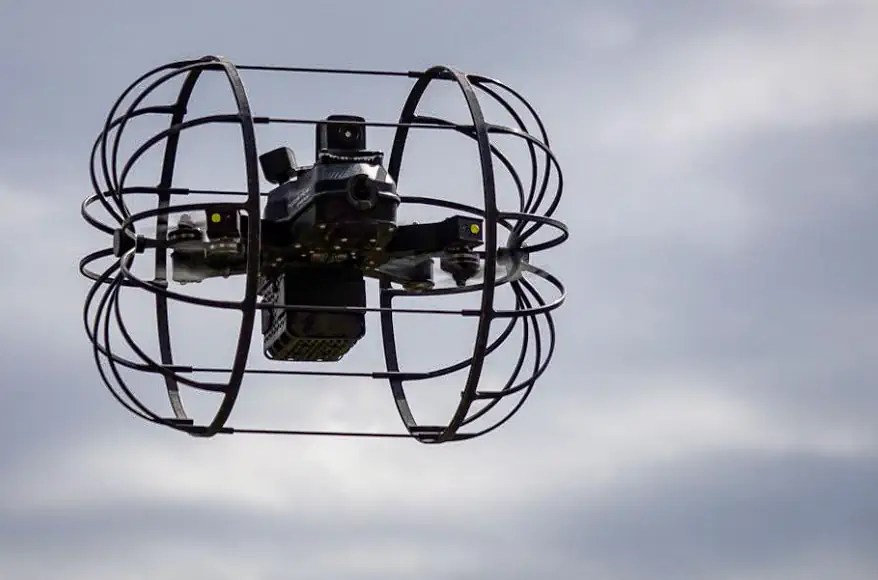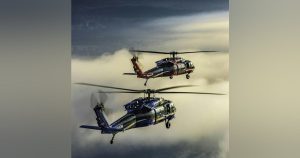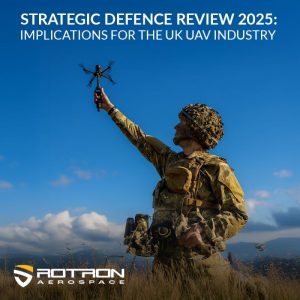Robotican Delivers Dozens of Hybrid Drone Systems to European Special Forces
The recent announcement from Robotican about the delivery of their advanced ROOSTER hybrid drone systems to European special forces is a noteworthy development in the field of tactical robotics, especially concerning defense and security applications. This article delves into the features, practical uses, and strategic significance of the ROOSTER system, and presents insights from industry experts, while providing a look into the future of hybrid drone technology.
Key Features of the ROOSTER
The ROOSTER stands out as a versatile fusion of a ground robot and aérea drone, designed specifically for intelligence, surveillance, and reconnaissance (ISR) missions in confined indoor and underground spaces. Its ability to switch between rolling on the ground and flying makes it uniquely adaptable to changing environments, such as tunnels or buildings, that typically challenge UAVs and ground robots.
- Hybrid mobility: Transitions effortlessly between flying and rolling modes.
- Extended operation time: Offers up to 90 minutes of mission duration and can remain on standby for up to 5 hours, making it ideal for prolonged and covert missions.
- Reliable communication: Employs a sophisticated mesh networking system that ensures connectivity even through thick walls or below ground.
- Payload adaptability: Capable of carrying payloads up to 300g, supporting a wide range of mission-critical equipment.
- Advanced sensors: Equipped with infrared, low-light, and visible-light cameras for continuous, all-day awareness.
- High-definition optics: Provides video resolutions up to 1080p with wide-angle lens options.
Significant Applications for Special Forces
European special forces navigate multifaceted urban and subterranean challenges, ranging from counterterrorism operations in historical urban centers to hostage rescue scenarios in complex underground structures. The ROOSTER excels in places where conventional UAVs cannot hover safely, and UGVs cannot maneuver or provide a visual.”
- Executing missions in unfamiliar or hostile enclosures before human entry.
- Mapping underground networks like tunnels or caves while minimizing risk.
- Conducting covert surveillance within extensive multilevel sites.
- Serving as a communication relay in areas with compromised signals, thanks to its robust network capabilities.
- Responding to emergencies by locating survivors or assessing threats in collapsed structures.
“Time and intelligence are critical in emergencies, and that’s where the ROOSTER excels—providing critical insights where humans cannot venture safely.”
— Security Robotics Expert, 2025
Technical Specifications
| Feature | Specification |
|---|---|
| Total weight | 1,620 grams |
| Max payload | 300 grams |
| Max roll time | 30–40 minutes |
| Max hover time | 12–15 minutes |
| Typical mission time | 60–90 minutes |
| Standby time | Up to 5 hours |
| Video resolution | 1080p / 720p / 480p |
| Lens angle | 130° HFOV, 90° VFOV |
| Communication | 2.1–2.5 GHz mesh network |
| Cameras | Day, low-light, NIR (infrared) |
Fun fact: The system’s ‘healing’ mesh network ensures that if a ROOSTER loses its connectivity or is disabled, the rest will reroute communications much like a game of ‘pass the message’.
The Need for ROOSTER in Europe
Europe’s varied geographical landscape—from ancient architecture to sprawling ports—requires next-generation tools for modern urban warfare. The ROOSTER addresses key operational challenges and enhances troop safety by taking on the initial risks, thus allowing human teams to strategize more effectively through real-time data feeds from its sophisticated sensor suite. Additionally, its hybrid nature enables it to adapt swiftly in unpredictable combat scenarios.
Robotican’s Innovative Approach
Robotican, based in Israel, is best known for integrating advanced autonomous AI algorithms with rugged mechanical platforms. Their guiding principle is to link cutting-edge sensor-based perception with real-world action. Their robots are not just hypothetical designs; they are tools tailored for operation in challenging environments worldwide.
“We create systems designed for real-world application, not display purposes. Our robots are engineered for operatives in the world’s most demanding and unforeseen situations.”
— Development Lead, Robotican, 2025
Beyond Military: Wider Impacts
While the ROOSTER’s introduction is focused on military applications, its hybrid design draws interest from civilian sectors as well.
- Disaster relief: Navigating through debris after natural disasters to locate survivors.
- Fire safety: Evaluating risks in environments filled with smoke or structurally unstable areas.
- Infrastructure inspections: Investigating complex underground networks, pipelines, or danger zones.
Market Shifts and Analysis
The deployment of the ROOSTER to European forces underscores a shift in global expectations for drones. Hybrid models are emerging as the new standard, with endurance, connectivity, and adaptability becoming fundamental qualities for drones in intricate environments. Customers now prioritize systems with advanced AI and sensor integration.
Pro tip for purchasers: When assessing high-tier tactical drones, consider not only technical specifications but also the system’s operational intelligence and real-time adaptive capabilities.
Pop Culture & Humour: Is This the Dawn of Skynet?
The innovative functionalities of the ROOSTER invoke images of its type from espionage thrillers like ‘Mission: Impossible’ with scenes of robots racing down corridors and launching across barriers effortlessly. For enthusiasts dreaming about flying remote-controlled cars—here’s something similar. And for the science fiction fans out there, rest easy— it’s not yet known to be conspiring world domination.
FAQ
How does the ROOSTER navigate signal loss in tunnels?
Its mesh communication autonomously locates alternative routes, ensuring data flow even with interruptions.
What payloads can it transport?
Various payloads up to 300g, from additional sensors to communication devices and small items.
Who are typical operators?
Usually, a two-person crew—one piloting, another managing sensors—though its autonomy may increase with ongoing AI advancements.
Is it military exclusive?
No, while initially adopted by special forces, it’s also applicable to first responders, industrial evaluations, and more.
Future Insights
The delivery of these hybrid systems to European forces highlights the increasing reliance on versatile robotic partners. As technical boundaries blur between air and ground along with intelligent autonomy, drones like the ROOSTER represent a frontier in unmanned mission technology.
For those interested in acquiring drones for advanced ISR, exploring drone business uses, or staying updated on robotics and defense advancements, watching hybrid systems like ROOSTER is crucial. The future of unmanned operations lies in both air and ground capabilities.
If your next mission briefing reveals a drone named ‘the ROOSTER,’ you’ll be assured that you are operating on the front lines of tech innovation.
Comprehensive insights, strategic guidance, and a touch of humor brought to you by experts in leading-edge robotics.













